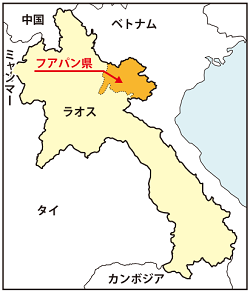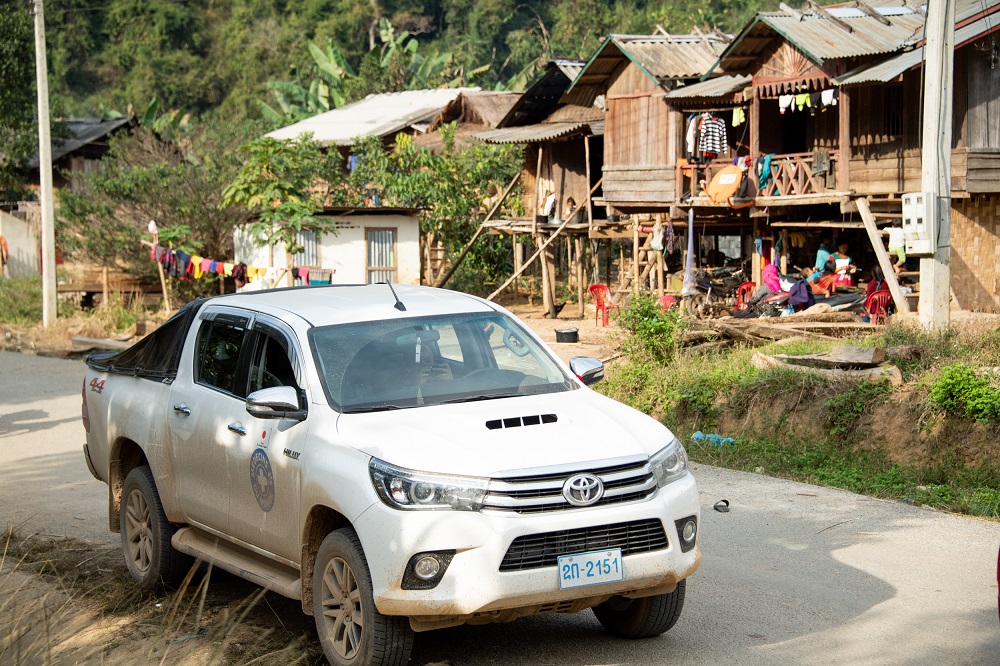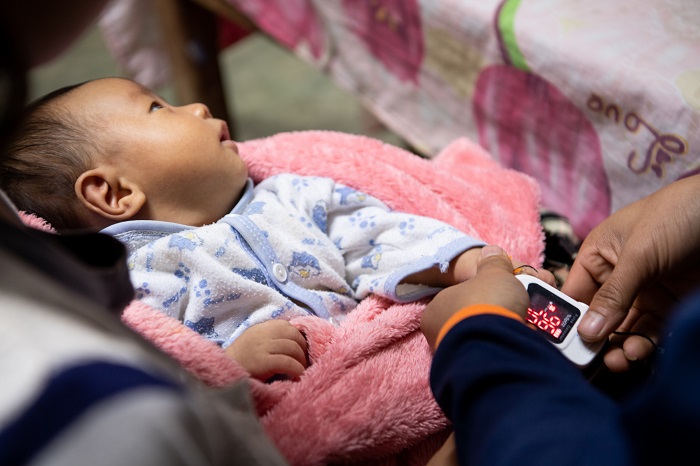Strengthening medical care throughout the region to protect children’s lives
 Laos has an under-five mortality rate of 44.1 per 1,000 live births (UNICEF, 2020), which is higher than other Southeast Asian countries. In rural areas, there are many issues surrounding pediatric medical care, such as providing the same medical care to children as adults because there are only a few medical professionals who have received training in pediatrics.
Laos has an under-five mortality rate of 44.1 per 1,000 live births (UNICEF, 2020), which is higher than other Southeast Asian countries. In rural areas, there are many issues surrounding pediatric medical care, such as providing the same medical care to children as adults because there are only a few medical professionals who have received training in pediatrics.* Donations to Médecins du Monde are tax deductible.
* Médecins du Monde does not use the donations it receives for specific support projects.
In principle, the total amount of donations received will be distributed to all support activities.
Against this background, MdM teams have been working to improve medical treatments and trainings in Champasak province since 2012, and since 2017 in Son and Huameuang districts of Houaphanh province, which are mountainous areas with a high under-five mortality rate. We have been conducting training sessions and activities of medical education. In addition to pediatric medical care, the activities expanded to strengthen the general medical system, with the aim of strengthening by repairing small local hospitals and training medical workers. In addition, we created a system to protect the health of people rooted in the community, such as conducting educational activities to encourage villagers to seek medical attention.
From July 2022, expand the area of activity by making use of the experience so far!
From July 2022, a project will be implemented in Xam Neua District and Quang District in the same province to build medical care for the entire region, focusing on maternal and child health. Specifically, we are planning to:
From July 2022
Promote prenatal and childbirth health, neonatal and child health, based on improving maternal and newborn care and promoting vaccination.From January 2023
In order to raise awareness of the health of local people, we will train volunteers.Communicate the importance of disease prevention and medical examinations through activities.

In the village, when a car or motorbike is needed, it is borrowed from the person who owns it and pays for gasoline.
Gasoline charges to the hospital are a big expense for people who just barely make ends meet. The photo shows the vehicle used for MdM activities.
Lives saved by accurate diagnosis and referral to advanced medical facilities
Here is an example of one young life that we were able to save thanks to our program.
|
As MdM was visiting a small hospital in Huamuang District, a woman from the village rushed in carrying a 5-month-old baby boy. The baby was not feeling well and had a high fever, vomiting and suffering from dehydration. When the hospital staff first saw the baby, they suspected pneumonia, but after puting into practice the steps they learned in the IMNCI* training and appropriately performing the tests necessary for diagnosis, they were able then to draw the conclusion that it was not pneumonia. In addition, the hospital staff, who judged that it was an urgent case and it would be difficult to provide medical care there, immediately decided to transfer them to a district hospital with more advanced medical equipment and better skilled medical staff. Small hospital staff borrowed a truck from a villager to transport the baby to the district hospital, 110 kilometers away. Laos Project Coordinator Aki Ogawa |
|---|
*What is IMNCI (Integrated Management of Newborn and Childhood Illness)?
Pneumonia, dehydration due to diarrhea, and malnutrition are common in countries with high under-five mortality. Symptoms can be masked by many different factors, and IMNCI can help.
The IMNCI is a system that allows medical staff without sufficient training to make accurate diagnoses using charts.
From this, it is possible to determine whether follow-up is necessary, what treatments are currently available, and whether transportation to advanced medical facilities is necessary.
|
< Click here to support >
By accumulating such experiences, people working in the local area can use their own judgment and actions.MdM will continue its activities in Laos until a regional medical system is established. Thanks for your support together we can make a difference! * Donations to Médecins du Monde are tax deductible.  ©Kazuo Koishi |
|---|
